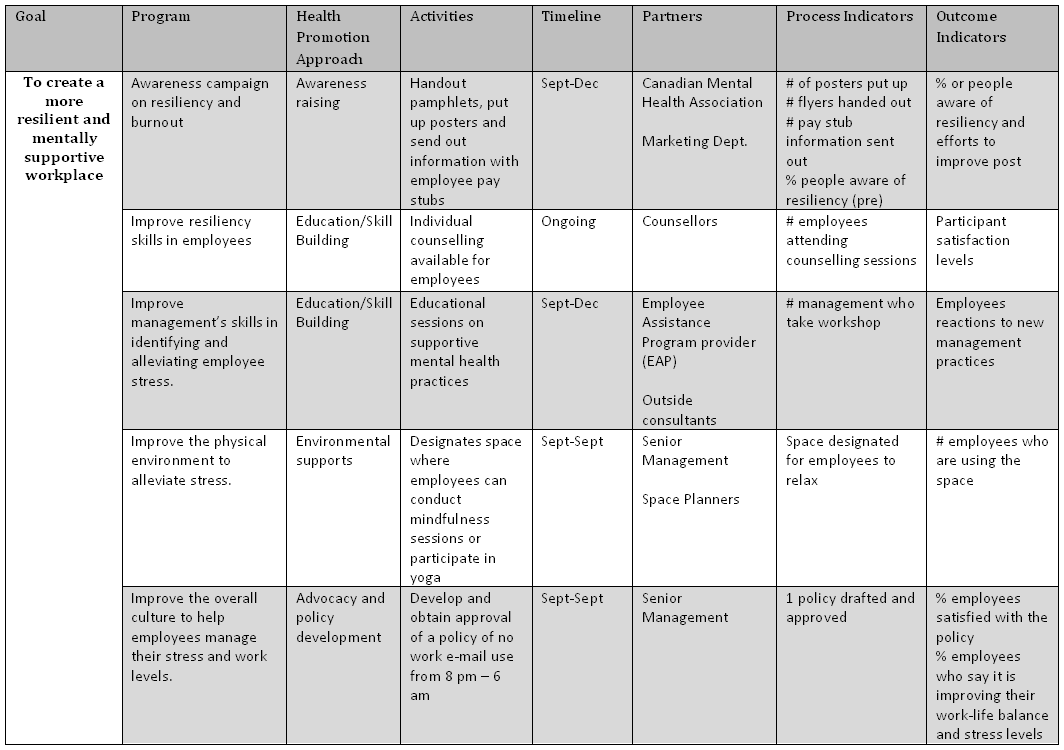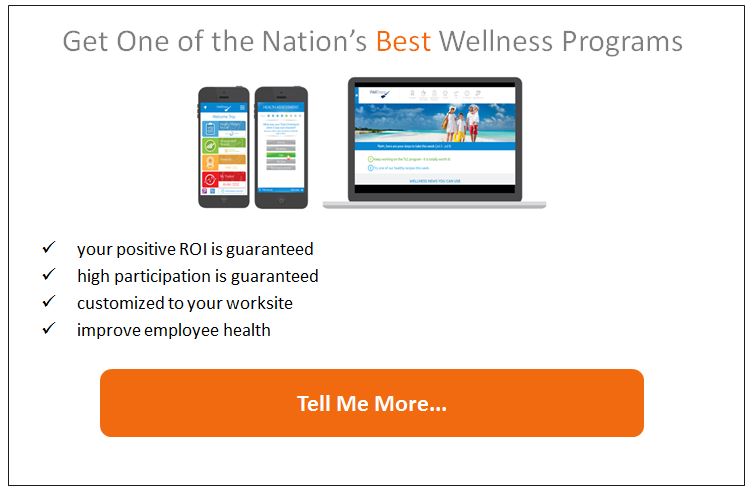Maintaining good health is of utmost importance now more than ever. Do not worry if you do not have the slightest idea about developing an employee wellness plan. We are, in fact, here to give you wellness plan examples that will help you take care of your employees. In addition, we will provide tips for preparation and smooth implementation.
On a personal level, taking care of one’s body and mind is vital for long-term happiness and success. But, this applies to the world of business too. If you are running a company with a sizable number of employees, keeping your workforce healthy must, undoubtedly, continue to be a priority in these uncertain times.

This is why robust, consistent, and well-thought-out wellness plans matter. If your company or organization does not have a corporate wellness program yet, you should consider implementing one as soon as possible. This will be to the benefit of your employees and your overall business outlook.
So, let’s get to it!
What Is a Wellness Plan?
In short, a wellness plan refers to any plan of action formulated to achieve sound health and well-being.
If you want this simple definition broken down further, ‘health’ can refer to both physical and mental health. At the same time, “well-being” involves a person’s overall mental and emotional state, especially in terms of how happy or satisfied they are on top of being physically healthy.
In a corporate setting, a personal wellness plan becomes an employee wellness plan. Not only for each person (individual), but also for the whole team (collective).
In a corporate setting, a personal wellness plan becomes an employee wellness plan. Its various components are geared towards achieving optimal health and well-being, not only for each person (individual) but also for the whole team (collective).
RELATED: How to Design a Wellness Plan That Works
What Should Be Covered in a Wellness Plan?
For a corporate wellness plan to be truly effective, it needs to be holistic. This means that it must address issues beyond just physical and mental health. Each aspect of the wellness plan should be interconnected to produce results that are greater than the sum of its parts.
The scope of a holistic wellness plan typically includes the following components:
Physical Health
This takes into account the employee’s fitness level, exercise habits, and existing medical conditions. The physical health aspect of your wellness plan should also be proactive in detecting and preventing serious health risks such as heart disease and diabetes.
RELATED: How Effective Workplace Health Programs Reduce Health Care Costs
Mental Health and Emotional Wellness
This covers all emotional, mental, and social well-being, especially how the employees handle stress or burnout. In recent years, this component has been expanded to include:
- financial wellness (mental issues brought on by worries about finances)
- spiritual wellness (values, contentment in one’s purpose in life)
- intellectual wellness (creativity, freedom of choice)

Healthy Diet or Nutritional Health
This element of your wellness plan must, obviously, focus on your employees’ diet choices and nutritional habits. On a deeper level, it should particularly explore how food:
- nourishes people’s lives
- affects a person’s emotional state
- affects mental health
- contributes to social interactions
- helps professional performance
- increases productivity
Work-Life Balance
In short, work-life balance encompasses all the factors affecting the healthy balance between the employee’s job and personal life. Achieving work-life balance is important for individual employees and the company as a whole. It can prevent absenteeism, tardiness, inconsistent productivity, and high employee turnover rates.
RELATED: 7 Important Reasons to Offer Employee Well-being at Work
Corporate Culture
Corporate culture certainly encompasses the collective values, beliefs, goals, and behaviors of a company, including those of its workforce and management. A positive corporate culture significantly impacts an employee’s overall well-being. When the culture is open, welcoming, and motivating, it fosters pride and cultivates a sense of fulfillment among employees. Conversely, a negative culture can lead to dissatisfaction and burnout.
Even more, an inclusive and encouraging workplace environment is crucial for instilling pride and fulfillment within the organization.

Workplace Safety
This emphasizes the importance of providing safe working conditions for every employee in the company. Prioritizing safety not only prevents accidents and injuries but also fosters an environment conducive to optimal productivity. Additionally, workplace safety builds a sense of trust and loyalty among employees, knowing that the company is committed to their well-being.
Now that we have covered the most critical components, let’s next explore some wellness plan examples and templates.
Sample Wellness Plan Templates
Some characteristics of a good wellness plan include the following.
Straightaway, it should be clear, specific, and complete. Your company wellness plan should clearly state the scope, desired results, and courses of action to achieve your goals.
Likewise, it should be easy to read. The wellness plan should be easy to understand. Whether the reader is a manager, HR personnel, or a brand new intern, they should be able to comprehend all of your goals and plans.
And finally, it should be supported by facts. It should include statistics and credible sources of information to support why you chose its different elements.
RELATED: How to Design an Employee Wellness Plan That Works
Basic Wellness Plan Template
| PART | DESCRIPTION |
| INTRODUCTION | Use this section to talk about the importance of employee wellness to the company. Sample text: Our company’s mission and vision states that [_________________]. To achieve that mission, we need our people to be at their best. To be at their best, they need to be healthy. That is why we designed this wellness plan: To give our employees a program that consists of resources, tools, and activities that will help them remain healthy, happy, and productive members of our organization. |
| OBJECTIVES | Identify and state your primary objective(s). If you deem it necessary, support your primary objective(s) with sub-component goals. State a targeted time frame to accomplish your objective(s). For example: We aim to accomplish these objectives by January 2025.Further quality your objectives by including a measurable component. For example: We aim to reduce absenteeism by 30 percent by January 2025. Provide a quick summary of your action plan. |
| ACTION PLAN | Sample course of action text below. |
| I. Biometric Screenings | Conduct biometric screenings to provide baseline data for all employees: – Blood cholesterol – Blood pressure (BP) – Blood sugar – Body mass index (BMI) – Height – Weight Generate risk scores for each employee. Offer coaching and professional medical assistance to those with elevated health risks based on baseline data and risk scores. |
| II. Physical Health | Set up an in-office fitness center. Hire fitness instructors on-site. Offer discounts on gym memberships. Create a weekend or after-hours fitness accountability group. Conduct weekly physical fitness challenges. |
| III. Mental Health & Emotional Wellness | Organize mindfulness or meditation sessions. Hold a mental health awareness day every week. Conduct stress management or burnout prevention workshops. Conduct financial wellness seminars. Send mental health awareness email blasts every week. Offer counseling in your employee health benefit plans. You can also provide resources for employees if they want to look for alternate sources of counseling services in your community or city. |
| IV. Healthy Diet & Nutritional Health | Organize healthy cooking classes every week. Provide healthy food options in the pantry. Invite nutrition experts to hold seminars every month. Set up an online library for healthy recipes that anyone can easily make at home. Conduct nutritional health challenges. |
| V. Work-Life Balance | Provide flexible working arrangements. Allow work from home arrangements. Introduce policies for flexible leaves. Provide childcare vouchers for employees with kids. Set up employee assistance programs that include work-life balance coaching or counseling. |
| VI. Corporate Culture | Organize volunteering activities for the local community. Create a workplace milestone tracking/recognition policy for employees. Regularly recognize employees who have done exemplary work. Organize team sports activities during weekends. Encourage team-building activities that are fun, such as: – Karaoke nights – Trivia nights – Potluck brunches or bakes |
| VII. Workplace Safety | Organize CPR training workshops. Host office ergonomics awareness seminars. Invite experts to talk about workplace safety and emergency best practices. Organize cleanliness drives. Host noise pollution awareness seminars. |
| ELIGIBILITY | Explain the complete rules and criteria in determining which employees may be eligible for the wellness program. Provide eligibility rules for non-fulltime employees: – Part-time employees – Newly hired employees – Freelancers – Contractors – Interns If applicable, include regulations for the immediate family of employees. |
| COSTS | Explain how much it will cost to implement the wellness plan. Include an explanation of costs to employees should they participate in the wellness program. Provide monthly or yearly cost projections if applicable. |
| TIMELINE | List all components of the action plan and then provide a timeline for each. Be as specific as possible regarding target completion or implementation dates. |
| MONITORING & MAINTENANCE | Same monitoring and maintenance plan text below. |
| I. Tracking of Results | Develop specific metrics for evaluating improvements. Formulate your tracking methodology: – Surveys done monthly or quarterly – Devices used for tracking purposes, such as wearables – Assure your employees that you will respect their privacy when it comes to tracking their health-related data |
| II. Analysis and Reporting | Release reports to individual employees. Provide counseling or coaching if necessary. |
| III. Maintenance | Formulate communication plans to encourage maximum participation. Frequently use active channels (via email, office bulletin board, other internal communication channels) to improve the wellness plan based on data and employee feedback. |
| CONTACT PERSONS | List all personnel who will be involved in the planning, implementation, and maintenance of the wellness plan. Include contact information like email addresses, phone numbers, Skype info, or messaging service handle. |
Alternative Outline
There are many different approaches and types of wellness plan examples, of course. You can refer to this wellness plan example provided by the Department of State Health Services (DSHS) of Texas.
As you will soon see, there are slight differences from the Basic Wellness Plan Template presented earlier. But overall, the components are quite similar.
| PART | DESCRIPTION |
| PURPOSE | State the overall purpose of the wellness plan. For example: The primary purpose of this wellness plan is to improve the health and well-being of all employees. The secondary purpose is to minimize or completely remove personal health-related issues that might impact employee productivity, attendance, and behavior. |
| OBJECTIVES | State the primary goal. For example: This wellness plan will enhance the health and well-being of all employees. It will also increase health awareness, as well as motivate employees to develop healthier habits. Include targeted measurable results. For example: By January 2025, 90 percent of all employees will provide feedback that they are aware of the wellness plan. By December 2025, 75 percent of all employees who have participated in physical fitness challenges will provide feedback that they intend to continue to develop better exercise habits. By December 2025, 80 percent of all employees who have participated in mental wellness activities will be more proactive in developing better stress management habits moving forward. By December 2025, 70 percent of all employees who have participated in nutritional health activities will be more conscious about choosing healthier options when it comes to diet. |
| SURVEY RESULTS | State that a survey was conducted to gauge the level of interest among employees. For example: Employees were asked to participate in a survey to collect information about which activities, health-related topics, preferred schedules, and costs work for them. Show the survey results. Incorporate charts and graphs if needed. |
| ELIGIBILITY | State the eligibility requirements. See sample text below: All full-time employees are eligible to participate in the wellness program voluntarily. Family members of eligible employees may also join the wellness program, but certain requirements may apply. |
| FACILITIES | For example: Conference rooms, as well as other available indoor or outdoor areas, might be used as venues for wellness activities. Announcements will be made in advance to inform employees about the venues for upcoming wellness activities. |
| INSTRUCTORS & COACHES | For example: The company will be hiring fitness instructors, mental health experts, nutritionists, licensed massage therapists, yoga instructors, life coaches, counselors, and other health professionals to facilitate wellness activities. Employees who are qualified to serve as instructors or coaches in wellness activities are welcome to volunteer under approval by management and subject to the requirements of company operations. |
| WELLNESS PLAN COMPONENTS | List all components of the wellness plan. Include details for each component. |
| COSTS | State all potential cost factors: – Modifying existing office facilities – Procuring equipment and supplies for wellness activities – Hiring instructors and coaches – Incentives and awards – Costs related to running an employee assistance program – Costs to employees who will participate |
| SCHEDULES | State expected schedules for wellness activities: – Prior to work hours – During work hours – During break times – After work hours – Mention special scheduling arrangements, if applicable – Flexible schedules for employees with non-regular work hours – Scheduling for night-shift employees |
| COMMITTEES | State if a Wellness Committee will be formed. Explain the mechanics for assembling the committee members: – As appointed by management – According to who volunteers |
| METHODS FOR MONITORING | For example: The company will make full use of the following monitoring methods: – Surveys to gauge awareness – Participation logs for wellness activities – Monthly summaries of wellness activities conducted – Suggestion boxes – Online feedback forms – Evaluation forms after every wellness activity – Periodic health risk appraisals (quarterly or semi-annually) |
Example of a Chart Template for a Mental Wellness Plan
If you are looking for an example of a mental health-specific wellness plan, check out this chart template suggested by the Canadian Mental Health Association (CMHA) of Ontario, Canada for example.

As you can see, the chart template, undoubtedly, incorporates everything that needs to be stated in a wellness plan. This template’s focus is on mental health:
- It states the goal of the wellness plan
- It lists the different program components, as well as the specific activities that will be implemented
- It classifies each component according to which health promotion approach it utilizes
- It certainly displays the timeline, including information for activities that are already ongoing
- It undoubtedly displays transparency by listing the mental health professional partners who will be helping in facilitating each activity
- It shows targeted results that are measurable for both the activity (Process Indicators) and the desired outcome (Outcome Indicators)
RELATED: 16 Workplace Health and Well-being Ideas, Activities, and Initiatives for Any Budget
Best Practices for the Wellness of Your Employees
We hope the wellness plan examples. as shown above, will assist you in creating one for your own organization. Keep in mind that what works for one company might not be suitable for another. Certainly, you can use the provided wellness plan examples as a general guide or source of inspiration. However, the most effective wellness plans for your company will be those tailored to your specific budget, company size, and current employee wellness levels.
It’s crucial to carefully assess your needs before developing your wellness plan. In short, conducting a company-wide survey to ask employees about their preferences, focus areas, motivations for participation, and other important details is highly recommended.

In fact, we feel strongly that your wellness plan’s success hinges on obtaining early input from your team.
Engage your employees from the outset by soliciting their feedback on health and well-being matters. This signals that you value their active involvement during the planning phase, which is crucial for fostering buy-in when it comes time to implement the plan.
Encouraging active participation from the get-go ensures that your employees feel heard and valued. After all, effective wellness plans rely on their insights and needs.
During your planning, consider unconventional approaches; some of the most successful plans integrate unique activities tailored to company culture. As long as these initiatives align with your wellness objectives, exploring innovative ideas can lead to impactful results.
That is why here at WellSteps, we are committed to helping companies discover the many benefits of employee wellness programs. So, book a free demo right here with our team and see what the possibilities exist for you.

Thank you for this article and for emphasizing holistic plans for health & wellness.
Comments are closed.